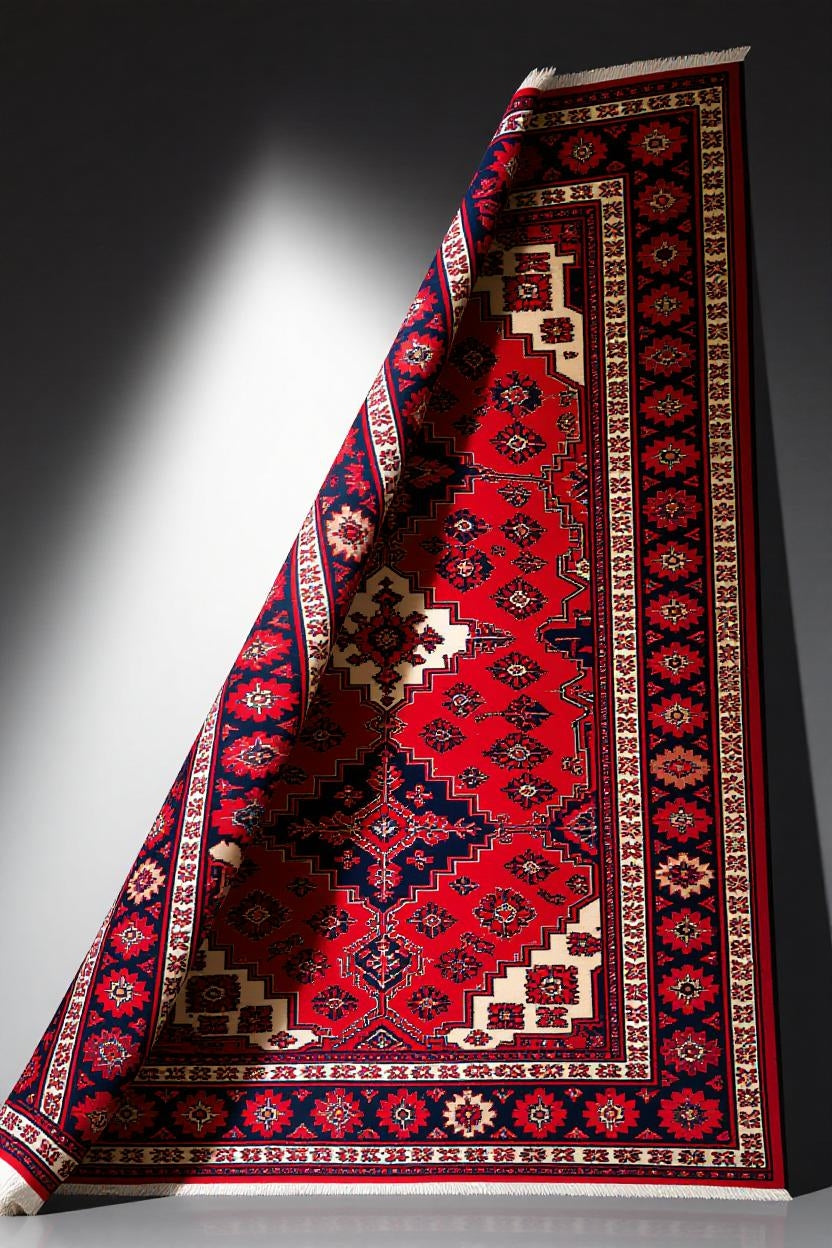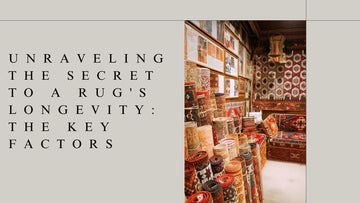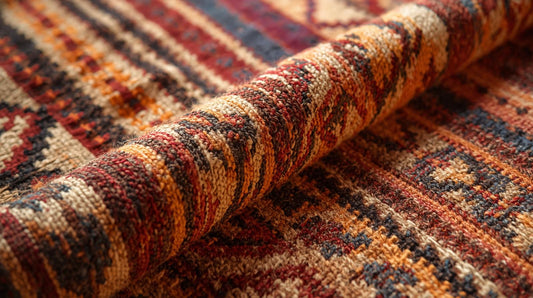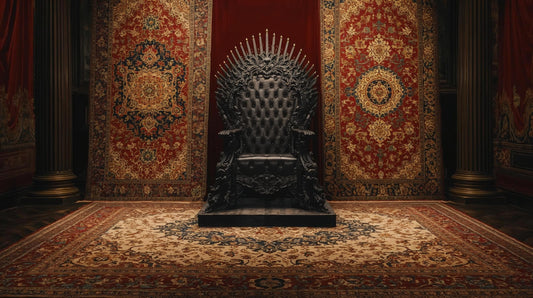Signs That It's Time to Replace (or Repair) Your Hand-Woven Carpet

Hey there, fellow home decor enthusiasts! If you're anything like me, your hand-woven carpet isn't just a floor covering it's a story woven into every thread. Maybe it came from a Cappadocia, a quiet artisan's workshop in Morocco, or even a family heirloom passed down through generations. These beauties aren't mass-produced; they're crafted with love, skill, and a touch of cultural magic. But let’s be real: even the finest handwoven rug naturally changes over time. Years of foot traffic, sunlight, and everyday life add character to the piece, gently transforming it from a vibrant centerpiece into a treasured heirloom with a story of its own.
In this post, we're diving deep into the telltale signs that your hand-woven carpet is crying out for attention. Whether it's time for a gentle repair to breathe new life into it or a full replacement to usher in a fresh chapter for your space, I'll walk you through it all. We'll cover everything from subtle wear indicators to red flags that scream "act now!" Grab a cup of tea (or your favorite brew), and let's unravel this together. By the end, you'll be equipped to make an informed decision that honors both your rug's heritage and your home's vibe.
Why Hand-Woven Carpets Deserve Special Care
Before we jump into the signs, a quick primer: Hand-woven carpets are labor-intensive masterpieces. Unlike machine-made alternatives, each knot is tied by hand—often taking months or years to complete. This makes them durable but also vulnerable to specific types of damage. Factors like natural fibers (wool, silk, cotton), dyes (vegetable-based vs. synthetic), and weave styles (Persian, Turkish, Berber) all play a role in how they age.
The good news? Many issues can be repaired by skilled professionals, extending the life of your rug for decades. But ignoring the signals can lead to irreversible harm, like structural breakdown or value loss (especially if it's an antique). Repair costs might range from $5–$20 per square foot, depending on the damage, while a new hand-woven piece could set you back $50–$500+ per square foot. Weighing the options starts with spotting the signs early.
Now, let's break it down into key categories of wear and tear. I'll flag when something leans toward "repair" versus "replace" to help you decide.
1. Fading Colors: When the Vibrancy Vanishes
One of the most heartbreaking sights for any rug lover is a once-lush palette dulled to pastels. Hand-woven carpets often use natural dyes that hold color beautifully, but exposure to sunlight, humidity, or even harsh cleaning agents can accelerate fading.
Subtle Signs of Fading
- Uneven Bleaching: If the rug's high-traffic areas (like under your coffee table) look noticeably lighter than the edges tucked under furniture, UV rays are the culprit. Check by lifting the rug—faded sections will feel slightly stiffer due to dye breakdown.
- Color Shifting: Reds turning pinkish, blues going grayish? This is oxidation at work, especially in wool rugs exposed to air pollution or smoke.
When to Repair
If fading is minor and localized (e.g., just the top inch or so), a professional can "overdye" the area—applying a matching color wash to blend it seamlessly. This works best on wool or cotton rugs and costs about $200–$500 for a 5x7-foot piece. It's a great option for semi-antique rugs where preserving originality matters.
When to Replace
Widespread fading across 30% or more of the surface? That's a sign the dyes have fundamentally broken down, and repairs won't hold. Synthetic dyes might mask it temporarily, but natural ones signal the rug's structural integrity is compromised. Time for a new weave that captures the original spirit—perhaps in a sun-safe room placement next time.
Pro Tip: Rotate your rug seasonally and use window sheers to block UV. A quick test: Place a dark cloth over a section for a month; if the color underneath pops, fading is active.
2. Fringe and Edge Damage: The Rug's Delicate Borders
Fringes aren't just decorative—they protect the rug's ends from unraveling. On hand-woven pieces, these are often hand-knotted warps, making them a weak point for everyday abuse.
Common Edge Issues
- Fraying or Unraveling: Threads pulling loose at the corners? Pets, vacuum mishaps, or foot traffic are usual suspects. Inspect by gently tugging—if more than a few knots give way, it's progressing.
- Worn or Missing Fringes: Bald spots along the edges indicate years of abrasion. In Oriental rugs, this can expose the core foundation, leading to selvedge (side edge) tears.
Repair vs. Replace
- Repair Route: For fringes, re-knotting or adding new ones is straightforward and affordable ($50–$150). Edge binding (sewing a fabric strip) prevents further damage on moderately worn rugs. If it's a valuable piece, serging (overlocking the edges) maintains authenticity.
- Replace Alert: If fringes are gone on both ends and the body shows core exposure (you see the weft threads underneath), the rug's foundation is toast. Repairs here could cost as much as a quarter of the rug's value and still look patchy. Opt for replacement if the damage spans over 20% of the perimeter.
Real Talk: I've seen heirloom rugs saved by timely fringe fixes, but delaying turns a $100 repair into a $1,000 headache. Store spares under the rug for easy matching.
3. Structural Wear: Holes, Tears, and Pile Loss
The heart of a hand-woven carpet is its pile—the tufted surface that gives it that plush feel. When this starts breaking down, it's a core integrity issue.
Indicators of Pile Problems
- Bald Patches: Smooth, shiny spots where the pile has worn flat? High-traffic zones like hallways are hotspots. Measure the depth: If it's less than half the original pile height (use a rug gauge tool for precision), it's early-stage.
- Holes or Tears: Small punctures from furniture legs or pet claws can widen into gashes. Check for "runs"—like a ladder in stockings—where wefts pull apart.
- Bunching or Buckling: If the rug ripples underfoot, humidity fluctuations or poor underlay are causing warping. This stresses the knots, leading to pile shedding.
Repair Strategies
- Minor Pile Loss: Re-knotting individual tufts is meticulous but effective for spots under 6 inches. Costs $10–$15 per square inch—ideal for localized wear on a cherished rug.
- Tears and Holes: Patching with a matching piece (from the rug's underside or a donor) sewn invisibly works wonders. For buckling, professional stretching and re-blocking restores flatness ($300–$600).
- When It Works Best: On densely knotted rugs (e.g., 200+ knots per square inch), repairs blend seamlessly.
Time for a New Rug?
Extensive pile loss (over 25% of the surface) or multiple large tears mean the weave is compromised—knots loosen, and the rug could disintegrate. Repairs become cosmetic Band-Aids, not fixes. If it's an investment piece, consult an appraiser; otherwise, embrace the upgrade. Modern hand-woven rugs often incorporate stronger blends for longevity.
Expert Hack: Vacuum with a beater-bar-free attachment weekly, and address spills immediately with club soda (never steam clean at home—it shrinks wool!).
4. Odor and Stain Buildup: Hidden Enemies Beneath the Surface
What you can't see can hurt your rug just as much. Stains and smells signal deeper contamination.
Sneaky Signs
- Persistent Odors: Musty smells from moisture? Mold thrives in damp fibers. Pet urine leaves ammonia traces that darken over time.
- Stubborn Stains: Yellowing from spills or embedded dirt that no home clean removes. Test by dabbing with white vinegar—if it spreads or darkens, it's set in.
- Discoloration Patches: Bleach-like spots from chemicals or urine crystals.
Repair Possibilities
- Odor Neutralization: Professional ozone treatment or enzyme washes eliminate smells without residue ($150–$400). For stains, solvent extraction pulls out embedded grime.
- Deep Cleaning: Every 1–2 years via hot water extraction (by pros) revives most issues, especially on silk or wool.
Replace If...
Chronic odors return post-cleaning, or stains cover 15%+ of the rug—fibers are likely degraded, trapping allergens and bacteria. Health hazards trump sentiment here; a fresh rug with built-in stain resistance (like treated wool) is the move.
Fun Fact: In traditional weaving cultures, rugs were aired outdoors monthly. Try a shaded balcony ritual to prevent buildup.
5. Overall Performance and Safety Red Flags
Beyond aesthetics, functionality matters. A rug that's become a hazard isn't serving your space.
Practical Warnings
- Slipperiness: If it slides on hard floors despite pads, the backing may be delaminating (layers separating).
- Shedding Excessively: Normal for new rugs, but ongoing baldness means poor-quality weave or moth damage (check for tiny holes and webbing).
- Allergen Hotspot: Increased sneezing or dust bunnies? Fibers trap particles like a net.
Repair or Refresh?
Anti-slip treatments or new pads fix sliding ($50–$100). Mothproofing sprays and vacuuming handle pests. But if shedding persists after six months, it's a weave flaw—repair won't help.
Full Replacement Call
Safety issues like tripping hazards from buckling or widespread moth infestation (irrevocable fiber munch) demand a swap. Prioritize low-pile options for safety in kid/pet homes.
Making the Decision: Repair, Restore, or Reinvent?
Spotting these signs is step one; deciding next is where the magic (or tough love) happens. Ask yourself:
- Sentimental Value: Heirlooms often warrant repairs to preserve history.
- Budget and Use: High-traffic areas favor durable replacements; low-use spots get TLC.
- Expert Input: Always consult a certified rug restorer (look for Oriental Rug Retailer Association members). Get quotes for both paths.
If repairing, budget 20–50% of the rug's value. For replacement, source ethically—support artisans via fair-trade sites or local weavers. Consider eco-friendly dyes and sustainable wool to align with modern values.
Wrapping It Up: Keep Your Weave Alive
Your hand-woven carpet is more than decor; it's a tactile link to craftsmanship and culture. By tuning into these signs—fading hues, frayed edges, pile woes, sneaky stains, and safety slips—you're not just maintaining a rug; you're honoring its story. Whether you opt for a skilled repair to patch up the past or a bold replacement to weave new memories, act with intention. Your floors (and feet) will thank you.
Got a rug dilemma of your own? Drop a comment below—let's chat fringes, fades, and fixes. Until next time, tread softly and love fiercely.
This post is for informational purposes only. For personalized advice, please contact us. Our dedicated family team has collaborated for over 50 years, bringing expertise across our three stores in the USA and Turkey.
Contact with us
No comments







0 comments